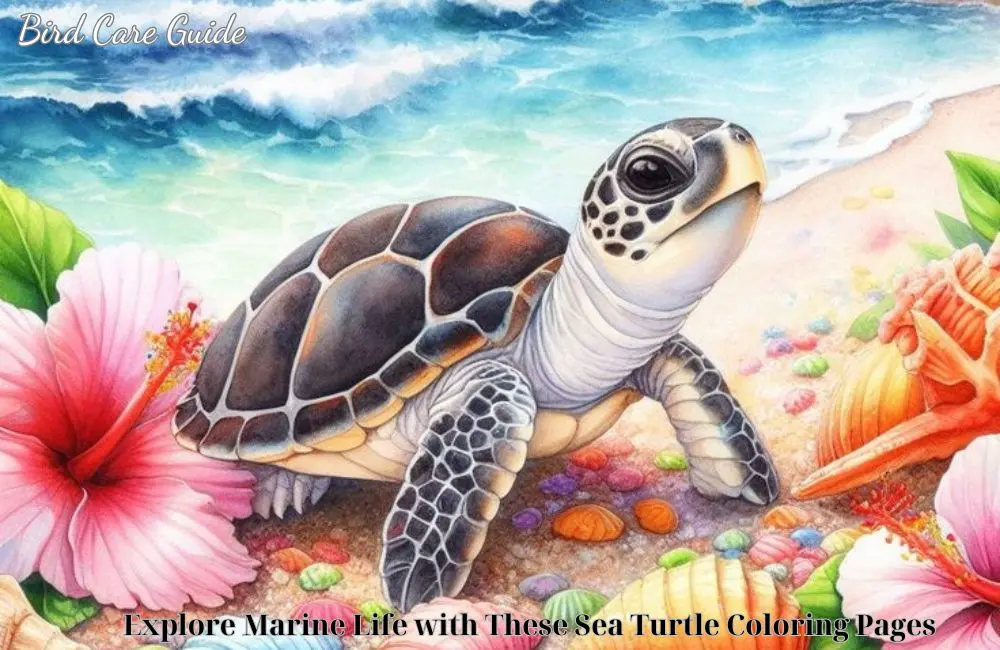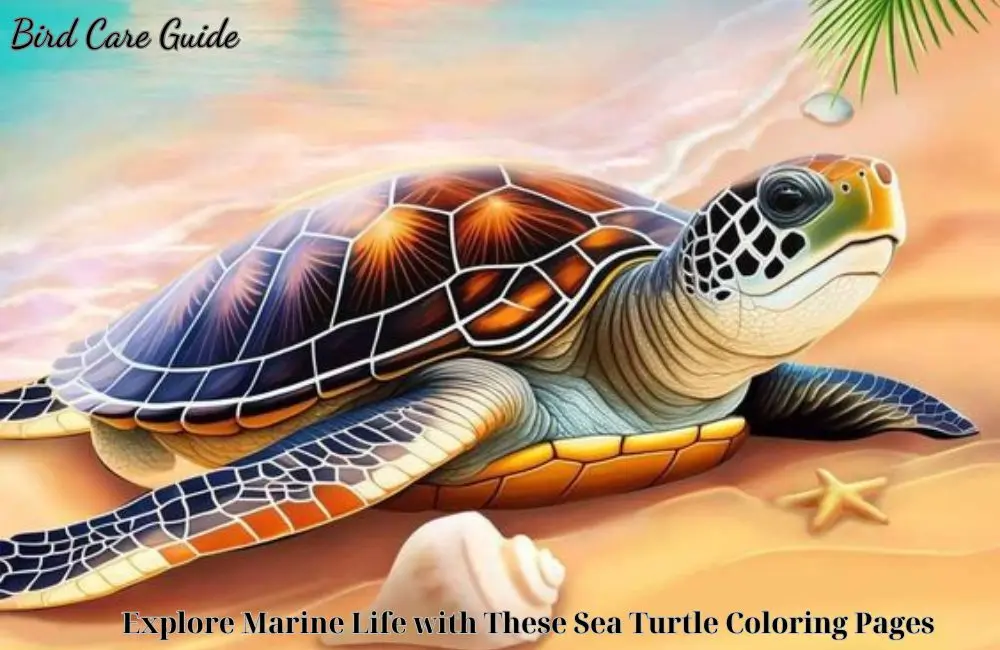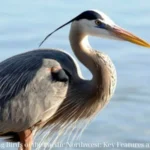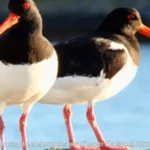Sea turtles are among the most fascinating and ancient creatures on our planet. With their graceful swimming and unique characteristics, they capture the imagination of both children and adults. One engaging way to learn about and appreciate these magnificent animals is through sea turtle coloring pages. “Bird Care Guide” will explore the world of sea turtles and provide tips and insights on how to use sea turtle coloring pages to explore marine life, making it an immersive experience. Fun and educational experience for everyone.
Introduction to Sea Turtles
Sea turtles are ancient mariners of the ocean, having existed for over 100 million years. There are seven species of sea turtles: the Green Sea Turtle, Loggerhead, Kemp’s Ridley, Olive Ridley, Hawksbill, Flatback, and the Leatherback. These species can be found in tropical and subtropical oceans worldwide. Each species has unique characteristics, but all share common features such as a streamlined shell, flippers adapted for swimming, and a primarily aquatic lifestyle.
Characteristics of Sea Turtles
Sea turtles are easily distinguishable by their large, bony shell, or carapace, which protects them from predators. Their flippers are specially adapted for swimming long distances in the ocean. Unlike land turtles, sea turtles cannot retract their heads and limbs into their shells. They have excellent eyesight underwater but are nearsighted on land.
Life Cycle of Sea Turtles
The life cycle of a sea turtle is a remarkable journey that begins on sandy beaches where females lay their eggs. After incubating for about 60 days, the hatchlings emerge and make a perilous trek to the ocean. This journey is fraught with dangers, including predators and human interference. Those that survive the journey spend several years in the open ocean before returning to coastal areas as juveniles and adults. Sea turtles reach sexual maturity between 20 and 50 years, depending on the species, and the females return to the same beaches where they were born to lay their eggs.
The Importance of Sea Turtles in Marine Ecosystems
Sea turtles play a crucial role in maintaining the health of marine ecosystems. Their presence and activities help balance marine food webs and support the overall biodiversity of the oceans. Here are some of the key roles that sea turtles play in their ecosystems:
Seagrass Beds
Green Turtles help maintain healthy seagrass beds by grazing on the seagrass. This grazing promotes the growth of new shoots, keeping the seagrass beds productive and healthy. Seagrass beds provide habitat and food for a variety of marine species, including fish, invertebrates, and other marine animals.
Coral Reefs
Hawksbill Turtles contribute to the health of coral reefs by feeding on sponges that compete with corals for space. By keeping sponge populations in check, Hawksbills help corals thrive, which in turn supports a diverse array of marine life.
Jellyfish Control
Leatherback and Olive Ridley Turtles help control jellyfish populations by feeding on them. Jellyfish can become overabundant and disrupt marine ecosystems if their populations are not kept in balance. Sea turtles play a vital role in preventing jellyfish blooms.
Nutrient Cycling
When sea turtles nest on beaches, they bring nutrients from the ocean to the coastal ecosystems. The eggs and hatchlings that do not survive provide nutrients to the sand, supporting coastal vegetation. This nutrient cycling helps maintain the health of coastal habitats.
Marine Food Webs
Sea turtles are an integral part of marine food webs. They serve as prey for larger predators like sharks and contribute to the flow of energy through the ecosystem. The loss of sea turtles can have cascading effects on marine food webs, highlighting their importance in maintaining ecological balance.
Educational Benefits of Sea Turtle Coloring Pages

Sea turtle coloring pages are more than just a fun activity; they are a valuable educational tool. Here are some benefits of using sea turtle coloring pages:
- Learning Through Art: Coloring pages can help children learn about sea turtles’ anatomy, habitats, and behaviors. Visual representation aids memory and understanding.
- Environmental Awareness: Engaging with sea turtle coloring pages fosters a connection to marine life and promotes awareness of environmental conservation issues.
- Creativity and Relaxation: Coloring is a relaxing activity that stimulates creativity. It allows individuals to express themselves artistically while learning about sea turtles.
How to Use Sea Turtle Coloring Pages for Education
Integrating sea turtle coloring pages into educational activities can enhance learning and engagement. Here are some ways to use these coloring pages effectively:
1. Classroom Activities
Teachers can incorporate sea turtle coloring pages into lessons about marine biology, ecology, and conservation. These pages can be used alongside factual information to reinforce learning.
- Science Lessons: Use coloring pages to teach students about the different species of sea turtles, their life cycles, and their roles in marine ecosystems.
- Conservation Discussions: Discuss the threats sea turtles face, such as plastic pollution, climate change, and illegal poaching, and how students can help protect these creatures.
2. Home Learning
Parents can use sea turtle coloring pages to educate their children about marine life in a fun and interactive way.
- Story Time: Pair coloring activities with stories or documentaries about sea turtles. This combination can make learning more immersive.
- Craft Projects: Use colored pages to create sea turtle-themed crafts, such as mobiles, posters, and dioramas, to further engage children.
3. Community Events
Organizations can use sea turtle coloring pages during environmental awareness events, beach cleanups, or marine life workshops to engage the community.
- Interactive Booths: Set up coloring stations at events where children can learn about sea turtles while participating in a fun activity.
- Awareness Campaigns: Distribute sea turtle coloring pages with information on how to protect sea turtles and their habitats.
Tips for Creating a Sea Turtle Coloring Page Collection
Creating a sea turtle coloring page collection involves selecting or designing images that are both engaging and educational. Here are some tips for curating a meaningful collection:
Include Different Sea Turtle Species
Ensure your collection features all seven species of sea turtles, highlighting their unique characteristics and habitats. This variety helps learners appreciate the diversity within the sea turtle family.
Focus on Realistic Depictions
While artistic freedom is essential, providing realistic depictions of sea turtles helps educate learners about their true appearance and environment.
Add Educational Elements
Incorporate educational elements such as labels, fun facts, and diagrams. For example, include labels for different parts of a sea turtle’s body or interesting facts about their behavior and diet.
Encourage Creativity
Include blank spaces or prompts for children to add their own drawings or notes. This encourages creativity and personal engagement with the subject matter.
Exploring Marine Life with Sea Turtle Coloring Pages
1. Introduction to Sea Turtles through Coloring
Start your marine adventure with basic sea turtle coloring pages. These pages typically feature simple outlines of sea turtles, perfect for young children who are just beginning to develop their coloring skills. These introductory pages can include:
- Basic Sea Turtle Outline: A simple design highlighting the turtle’s shell, flippers, and head.
- Sea Turtle Swimming: An illustration of a sea turtle gliding through the water, showcasing its graceful movements.
- Sea Turtle Hatchling: A depiction of a baby sea turtle emerging from its egg, introducing the concept of sea turtle life cycles.
2. Diving Deeper: Detailed Sea Turtle Coloring Pages
As coloring enthusiasts become more comfortable, they can progress to more detailed and intricate sea turtle coloring pages. These pages offer a closer look at the unique features of different sea turtle species and their environments. Detailed pages might include:
- Close-Up of Sea Turtle Shell Patterns: Highlighting the beautiful and complex designs found on a sea turtle’s shell.
- Underwater Scenes: Featuring sea turtles amidst coral reefs, fish, and other marine life, providing a rich, detailed scene to color.
- Species-Specific Pages: Illustrations focusing on specific species, such as the Leatherback or Hawksbill, with detailed patterns and distinguishing characteristics.
3. Educational Sea Turtle Coloring Pages
Combining fun with learning, educational coloring pages can teach important facts about sea turtles and their habitats. These pages can include:
- Life Cycle of a Sea Turtle: A series of illustrations depicting the stages from egg to adult sea turtle, teaching about growth and development.
- Anatomy of a Sea Turtle: Diagrams labeling the different parts of a sea turtle, such as the carapace, plastron, and flippers.
- Conservation Messages: Pages with illustrations and messages about the importance of conservation, such as protecting nesting sites and reducing plastic pollution.
4. Interactive and Themed Sea Turtle Coloring Pages
Interactive coloring pages add an extra layer of engagement by incorporating activities alongside the coloring elements. These pages might feature:
- Color by Number: Pages where each section is numbered, and children must use the corresponding colors to complete the picture.
- Mazes and Puzzles: Combining coloring with puzzles, such as guiding a sea turtle through a maze to the ocean.
- Themed Sets: Collections of coloring pages based on themes like “Sea Turtle Adventures,” where each page tells a part of a story.
Creating Your Own Sea Turtle Coloring Pages
For those feeling particularly creative, designing custom sea turtle coloring pages can be a rewarding project. Here are some tips to get started:
- Gather Inspiration: Look at photos of sea turtles, marine life, and existing coloring pages for ideas.
- Sketch Your Designs: Use pencil and paper to sketch out your sea turtle illustrations. Consider different poses, angles, and backgrounds.
- Digitize Your Sketches: Scan your sketches and use digital tools to refine and clean up the lines.
- Add Details and Text: Include educational text, fun facts, or additional marine elements to enrich the coloring experience.
- Print and Share: Once your designs are complete, print them out and share them with friends, family, or online communities.
Conclusion
Sea turtle coloring pages are a wonderful way to explore marine life, offering educational value and fostering a connection to the natural world. By incorporating these pages into various activities, educators, parents, and community leaders can inspire a love for sea turtles and a commitment to marine conservation. Whether in the classroom, at home, or during community events, sea turtle coloring pages can be a powerful tool for learning and creativity, helping to ensure that these incredible creatures are appreciated and protected for generations to come.





